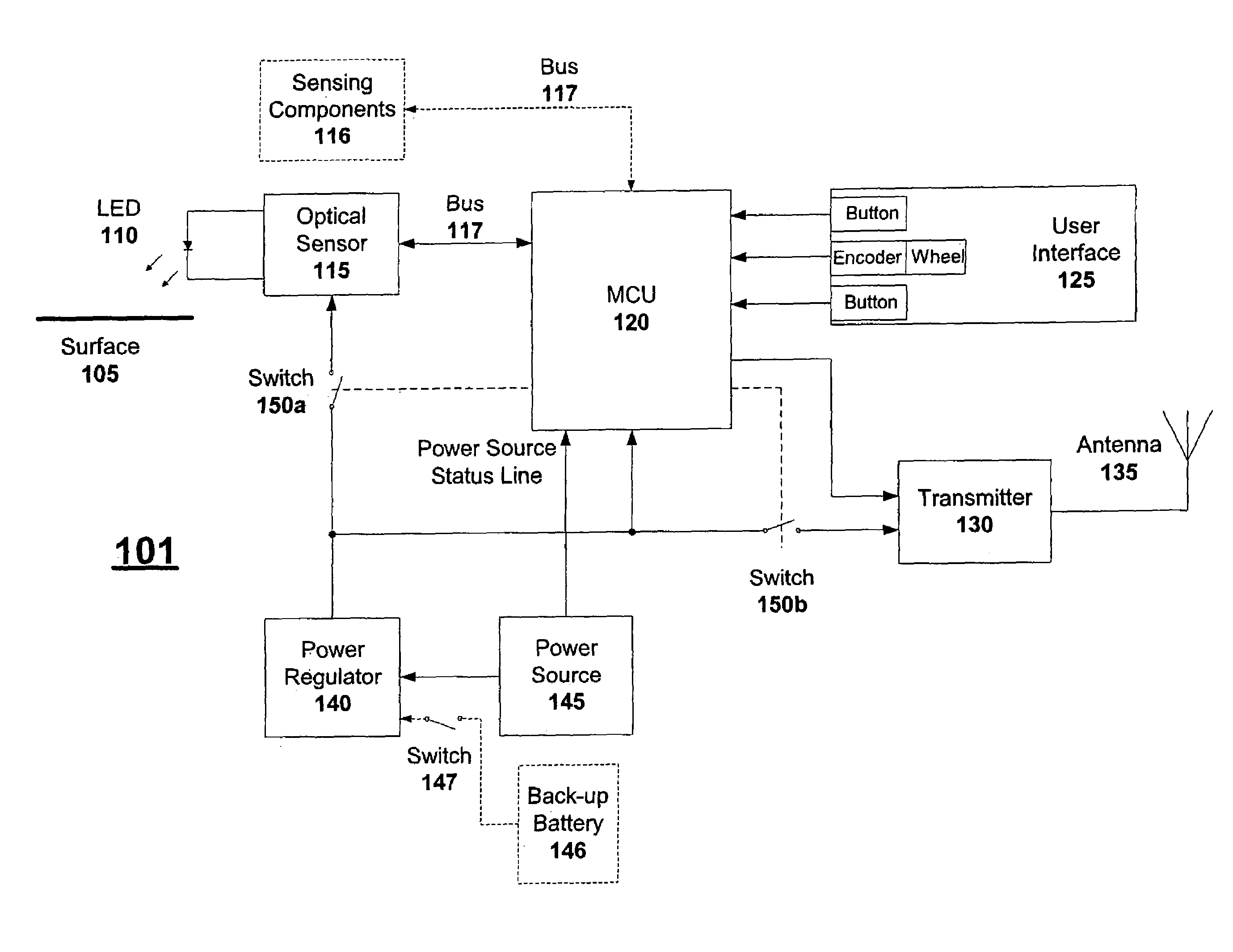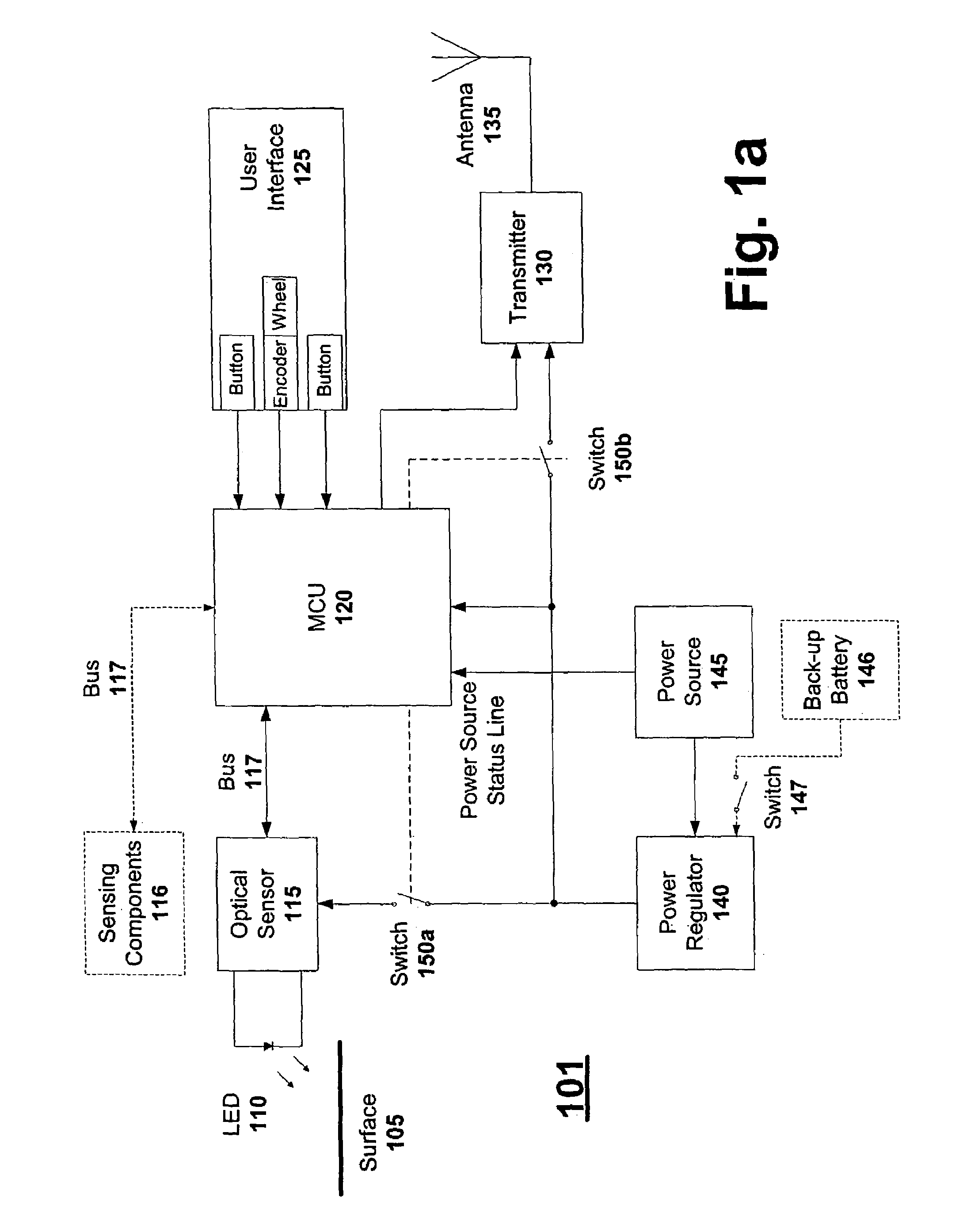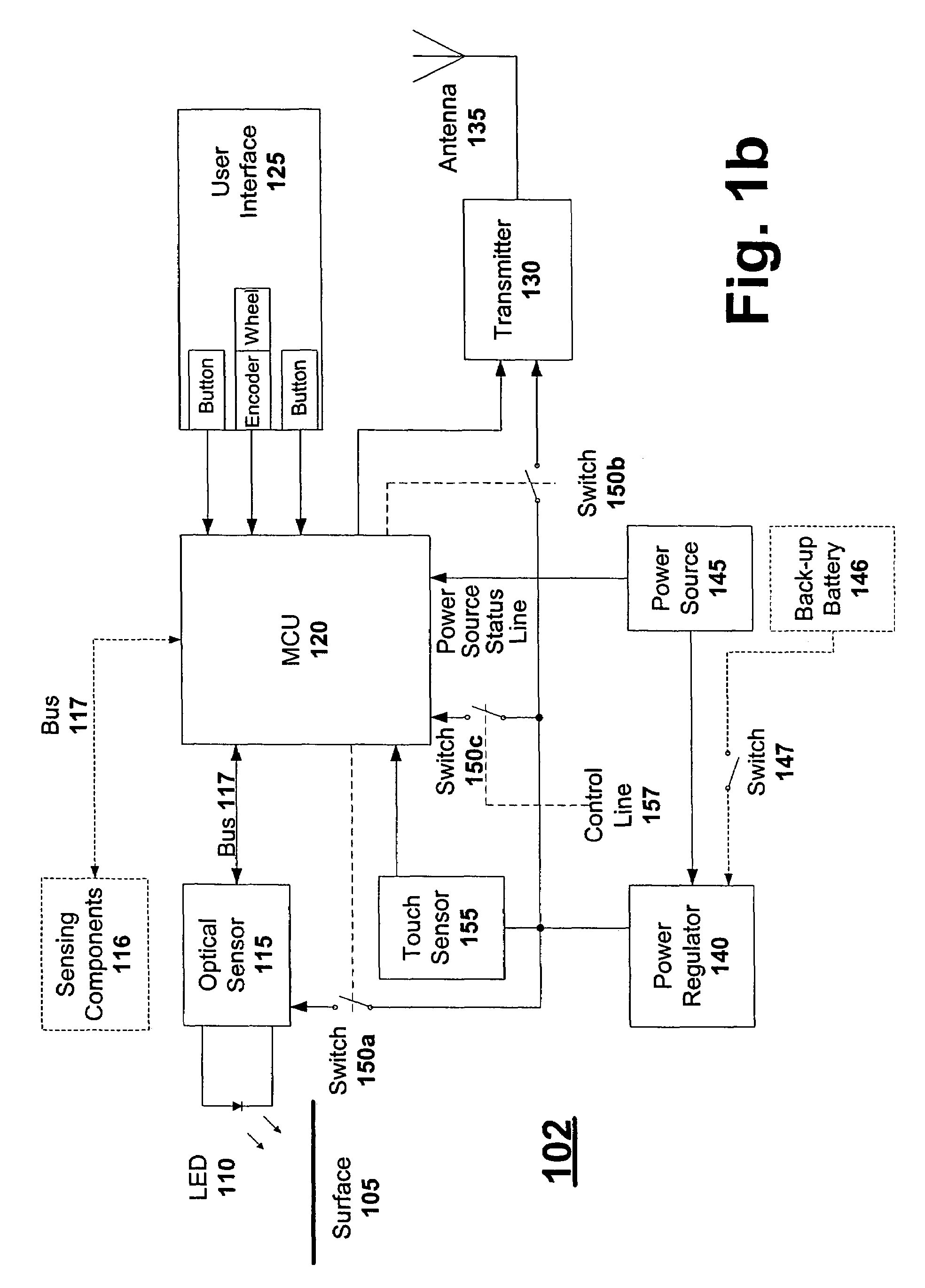Wireless optical input device
a wireless input and optical input technology, applied in instruments, sensing record carriers, computing, etc., can solve the problems of limiting the area on which the input device can move, debris and wear and tear, and easy malfunction of the actuating assembly (e.g., the roller ball and the corresponding roller), so as to avoid premature depletion and manage the power consumption of the wireless devi
- Summary
- Abstract
- Description
- Claims
- Application Information
AI Technical Summary
Benefits of technology
Problems solved by technology
Method used
Image
Examples
Embodiment Construction
[0016]FIG. 1a illustrates a block diagram of a wireless input device that employs an optical sensor in accordance with one embodiment of the present invention. Device 101 includes a LED 110, an optical sensor 115, a microcontroller unit (MCU) 120, a user interface 125, a transmitter 130, an antenna 135, a power regulator 140, a power source 145 and switches 150a and 150b. One embodiment of optical sensor 115 includes a charged-coupled device (CCD) array and a lens for focusing reflected light onto the array. In alternative embodiments, optical sensor 115 can have a photo-sensitive element other than a CCD array, such as a number of photo-diodes or photo-transistors. In addition, optical sensor 115 might have no lens (e.g., reflected light is received directly by a photo-sensitive element) or more than one lens (e.g., one lens between LED 110 and surface 105, and a second lens between surface 105 and a photo-sensitive element of optical sensor 115). Likewise, LED 110 might have a len...
PUM
 Login to View More
Login to View More Abstract
Description
Claims
Application Information
 Login to View More
Login to View More - R&D
- Intellectual Property
- Life Sciences
- Materials
- Tech Scout
- Unparalleled Data Quality
- Higher Quality Content
- 60% Fewer Hallucinations
Browse by: Latest US Patents, China's latest patents, Technical Efficacy Thesaurus, Application Domain, Technology Topic, Popular Technical Reports.
© 2025 PatSnap. All rights reserved.Legal|Privacy policy|Modern Slavery Act Transparency Statement|Sitemap|About US| Contact US: help@patsnap.com



